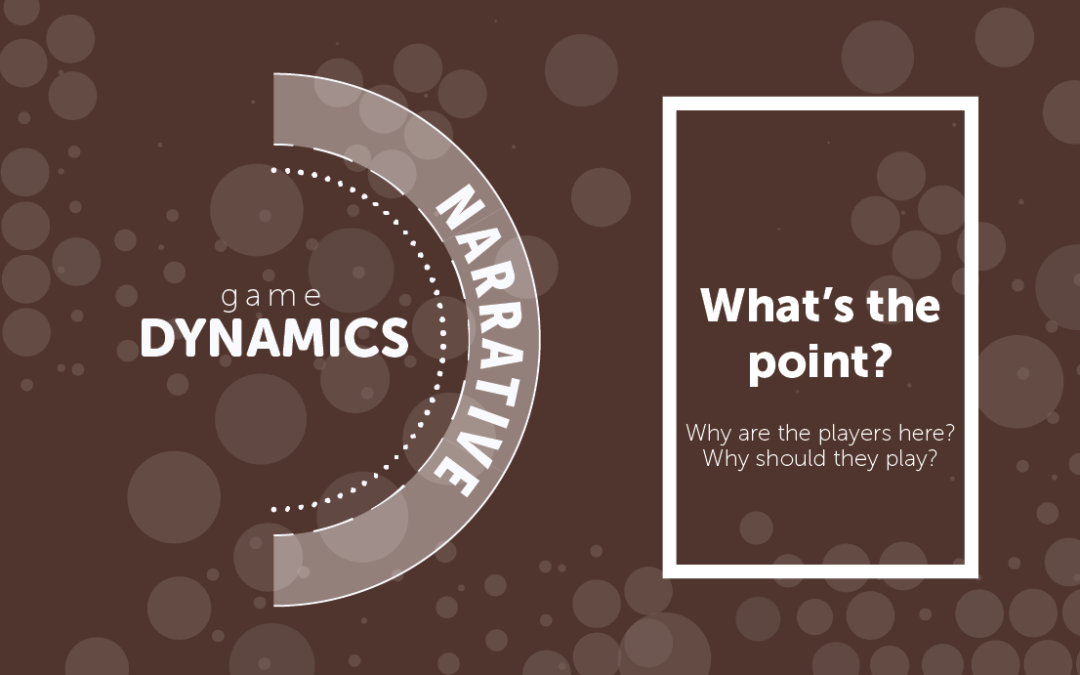
by Bernardo | Jan 21, 2017 | Game Dynamics, Gamification
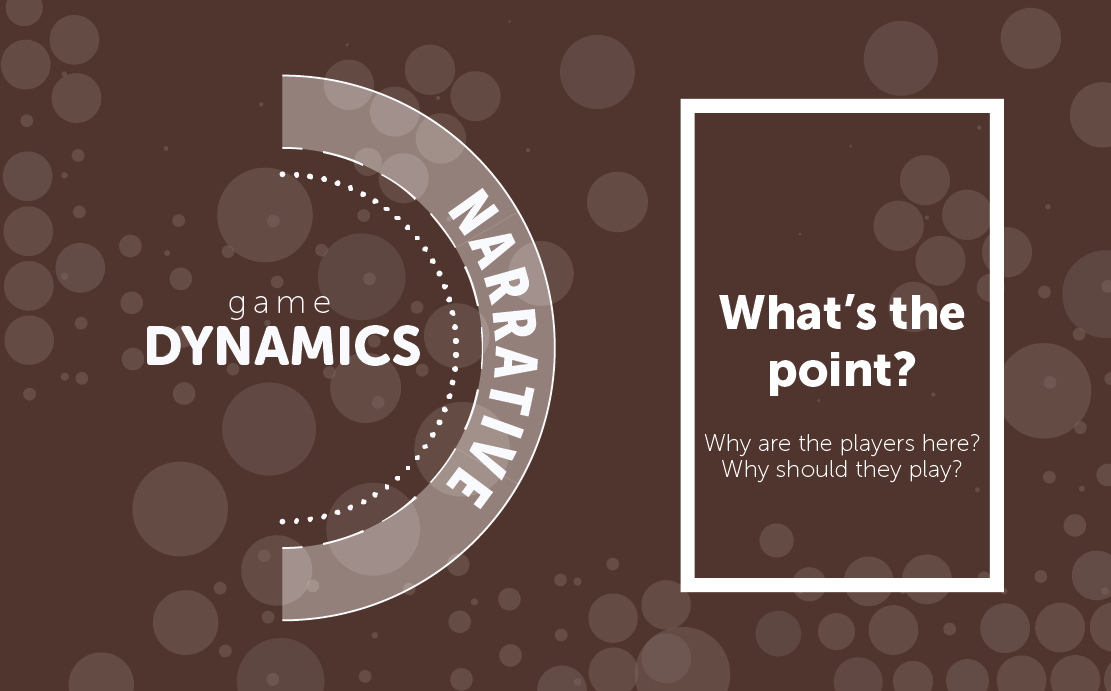 In terms of #gamification and #gamedynamics, the narrative is not just a story or a writing technique/style or whatever the term for writers mean (hehe).
In terms of #gamification and #gamedynamics, the narrative is not just a story or a writing technique/style or whatever the term for writers mean (hehe).
Narrative is really a powerful tool. It can guide your system into success within seconds or destroy it forever. You must be very careful when writing as it will prove its sensitivity to player behavior far more than any other dynamic. It is used to connect the players to the reason why they are playing. It will help them visualize objectives easily and always return to the path without having to analyze or process a lot of information.
When you tell people they have to save the world, it becomes way to ambiguous, however, if you say they must save it from a specific threat, they will always know WHY they are doing/learning whatever it is you are trying them to learn/do and they’ll know what will be a victory or a failure.
I have divided narrative into two game mechanic categories: Story and Objectives. This basically means that you either work towards a series of objectives or you are told a story you want to be part of.
When using a Story, you tell your players something like “Here you will become the best web designer on the planet, however, the road is unclear and heavy, but we will guide you into it”
When you use Objectives, you tell your players something like “In order to become the best web designer, you must finish the following tasks: 1, 2, 3, 4, 5, 6… ,938”
There is NOTHING wrong in combining mechanics and there isn’t one better. Both of them work wonders on your system as long as the goal is clear.
The narrative is the answer to WHY the players are playing. How do you want them to find such answer lies in the choice of the category.
Let me know if you find a different way to organize the categories and your thoughts!
M.B.O. (Mind Behind the Operation)
6th position in the Gamification Gurus Power 100!
Gamification Keynote Speaker & the mind behind the operation @bluerabbit, a gamification platform for education.
Developed three frameworks to teach/learn how to create gamification systems and build gamified content
Declared a world wide war on grades.
<a class="twitter-timeline" data-height="400" href="https://twitter.com/bletayf">Tweets by Bernardo Letayf</a> <script async src="//platform.twitter.com/widgets.js" charset="utf-8"></script>

by Bernardo | Jan 21, 2017 | Gamification
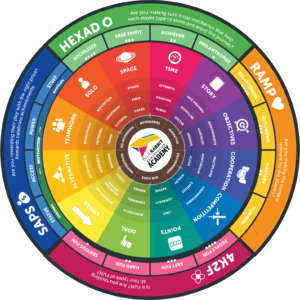 Our in-house game master framework is a model built on the basis of many #gamification gurus.
Our in-house game master framework is a model built on the basis of many #gamification gurus.
The goal is to setup a framework that will help people understand easily where to strat, what are the key points of a gamified system and how to test it on a conceptual level before putting all the effort in developing the content which is a lot harder and time consuming
The MDA framework for game design states to build three things: MECHANICS, DYNAMICS and AESETHICS (a.k.a. components acording to Kevin Werbach’s pyramid of game anatomy)
In my experience the framework order should always be: 1)Dynamics, 2) Mechanics and 3) Aesethics. Doing it differently will affect your workflow heavily. When you need to make changes dynamics should be the last things to touch as changing them will mosify everything in cascade.
Our first approach on the framework is the Dynamics.
We defined six:
- Narrative
- Environment
- Win state
- Progression
- Relationships
- Limits
These aren’t at all absolute or definitive. You may find authors who use them as mechanics or won’t consider them as fundamental, however, I’ve found that filling this six steps first is the best way to organize a gamified system.
Coming up next: Narrative. Why are the players here.
Any thoughts?
<a rel="license" href="https://creativecommons.org/licenses/by-nc-nd/4.0/"><img alt="Creative Commons License" style="border-width:0" src="https://i.creativecommons.org/l/by-nc-nd/4.0/88x31.png" /></a><br /><span xmlns:dct="https://purl.org/dc/terms/" property="dct:title">BlueRabbit Gamification Academy Game Master Framework</span> by <a xmlns:cc="https://creativecommons.org/ns#" href="https://bluerabbit.io/2017/01/game-master-framework/" property="cc:attributionName" rel="cc:attributionURL">Bernardo Letayf</a> is licensed under a <a rel="license" href="https://creativecommons.org/licenses/by-nc-nd/4.0/">Creative Commons Attribution-NonCommercial-NoDerivatives 4.0 International License</a>.<br />Based on a work at <a xmlns:dct="https://purl.org/dc/terms/" href="https://bluerabbit.io/b/wp-content/uploads/2017/01/GM-FW.png" rel="dct:source">https://bluerabbit.io/b/wp-content/uploads/2017/01/GM-FW.png</a>.
M.B.O. (Mind Behind the Operation)
6th position in the Gamification Gurus Power 100!
Gamification Keynote Speaker & the mind behind the operation @bluerabbit, a gamification platform for education.
Developed three frameworks to teach/learn how to create gamification systems and build gamified content
Declared a world wide war on grades.
<a class="twitter-timeline" data-height="400" href="https://twitter.com/bletayf">Tweets by Bernardo Letayf</a> <script async src="//platform.twitter.com/widgets.js" charset="utf-8"></script>
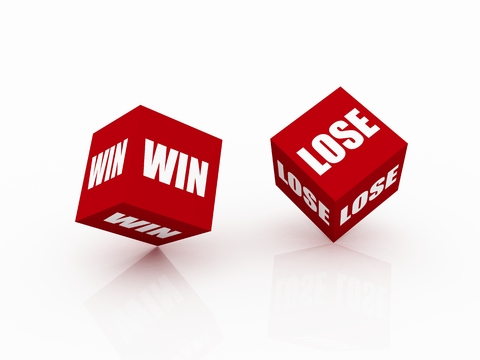
by Bernardo | Dec 1, 2016 | Gamification
 In a gamification strategy the goal is not winning. It’s about becoming, learning, growing.
In a gamification strategy the goal is not winning. It’s about becoming, learning, growing.
There will be win states, but if you make the strategy about winning, then it becomes a competition and sports have that area developed and covered and it shouldn’t be the main objective of a gamified environment. If anything, the goal should be to NEVER win, like playing a game of tetris, where you keep getting bigger and better challenges.
According to Andrea Kuszewski (@AndreaKuszewski) “If you don’t spend the majority of your time, at the beginning of each project, finding what motivates your audience, YOU ARE DOING IT WRONG”. However in gamification what motivates the audience and the goal are not entirely the same thing.
There are 4 experience phases that (according to Yu Kai Chou) follow a good gamification strategy. People learn about whatever they are doing (Discovery), then they get on board with it (On Boarding), after, they start levelling up in skill and learning (Scaffolding) and finally they become masters and enter the hard part to design (The End Game).
In most cases, people don’t realise when they become masters of whatever they are involved. It just happens as a consequence of their hard work and growth. Unless it’s specific training, the goal is never set to become a master copy maker or a master student in math. However if we can change that approach, the goals and the motivation will come a lot closer and help each other out in the development of skills for the players.
As usual, the narrative (at least for me), is the one element that help clear this out perfectly simple. You don’t know how the book is going to end, but you keep on reading and learn a lot in the way and crave for the ending.
When building a gamified environment and you put the clear goal in the end, you can work with the obstacles to become the motivators to achieve that goal. This will help the brain of the players tackle the goal in smaller steps and therefore feeling it’s easier. This doesn’t mean they have to always see the main goal in front, but the smaller one and take things step by step.
Now, I said that the goal and the motivation are not entirely the same thing, however, in the end, when they are just one more challenge away from ending the game, the goal MUST become a powerful motivator and the reward should feel powerful from within.
Remember that the rewards should recognise, don’t bribe. Rewards should celebrate the achievement not be the achievement (Andrzej Marczewski @daverage)
M.B.O. (Mind Behind the Operation)
6th position in the Gamification Gurus Power 100!
Gamification Keynote Speaker & the mind behind the operation @bluerabbit, a gamification platform for education.
Developed three frameworks to teach/learn how to create gamification systems and build gamified content
Declared a world wide war on grades.
<a class="twitter-timeline" data-height="400" href="https://twitter.com/bletayf">Tweets by Bernardo Letayf</a> <script async src="//platform.twitter.com/widgets.js" charset="utf-8"></script>
by Bernardo | Nov 4, 2016 | Education, Gamification
When you build a gamified classroom you need to develop two sides of the same coin. The problem with it is that it requires two almost opposite ways of thinking.
On one side you need to think as an educator and on the other as a gamification designer.
We will not address the curriculum design on this article, but we will address the gamification design. If I try to write down all the concepts of gamification here it would require one thousand posts and it’s not worthy.
However, in my experience there are three things you need to consider when gamifying your classroom.
- The system
- The feedback
- The story
The System
The rules. Nothing more. However, you must make them clear and balanced.
Here is a sample system.
You will give coins for every homework in turned in. The coins will be used for getting additional points in class (one to 10 scale). One point = 1000 coins. You decide to assign 100 coins to every homework turned in on time. So every time a player turns in 10 homeworks on time they will get an additional point in their final grade.
What’s the problem with this system? It’s most likely that you will assign more than 10 homeworks in a school year and at the same time if you assign 100 homeworks they already have 10 points meaning they won’t need to do any additional work, right?
Maybe you won’t assign 100 homeworks, but buying your grade for that conversion rate is a little too easy for the players to get the best possible grade.
When you build the system you need to try it and test-run it as if your players are using it. You need to play the game once you made the rules to see if it works. Just remember not to make it either too complex or too simple, the point is to make it fun.
The Feedback
Wether you choose a complex online platform to keep track or a simple spreadsheet in google apps, it really doesn’t matter as long as you make sure to give feedback to the players as fast as possible.
One of the most stressing things for the players is not to know where they stand. If you assign coins to the players, let them know IMMEDIATELY how many they have and make sure they have access to that information.
Grades can wait. They are part of the educational system of the world, but when the player receives the coins, it gives them a fair sense of PROGRESS in the class and they know they have more resources to power up their grades, you take the stress away from them and they will focus on earning an infinite amount of coins rather than the limited grade.
The Story
Hello, welcome to Multimedia Design. As of now, you are no longer students. We don’t have space in our ranks for that. You are now Creative Professional Freelancers working for the PublishUs agency and we need all your skills to help the world get better.
This is the story I tell my players the first day of school. They don’t feel they are studying. They feel they are working towards a goal. Learning happens because otherwise, they are unable to meet the goal, not because they will be punished forever with a bad grade.
Think about it.
What makes people choose between books, movies or games? What made you wait in line for 3 hours before they released the last book of Harry Potter?
This is the most important element of your gamified classroom. People need to feel emotionally attracted to your class and the best way to do it is with a story.

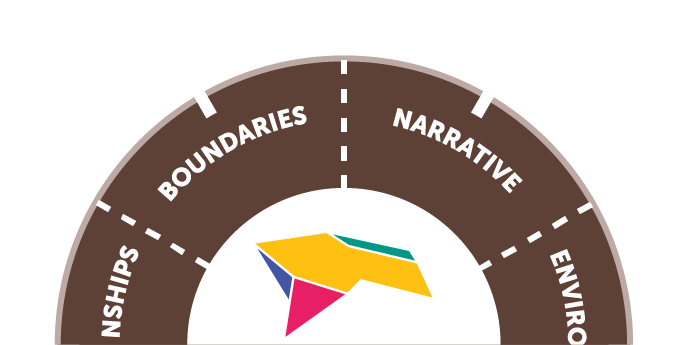
 In terms of #gamification and #gamedynamics, the narrative is not just a story or a writing technique/style or whatever the term for writers mean (hehe).
In terms of #gamification and #gamedynamics, the narrative is not just a story or a writing technique/style or whatever the term for writers mean (hehe).




 In a gamification strategy the goal is not winning. It’s about becoming, learning, growing.
In a gamification strategy the goal is not winning. It’s about becoming, learning, growing.